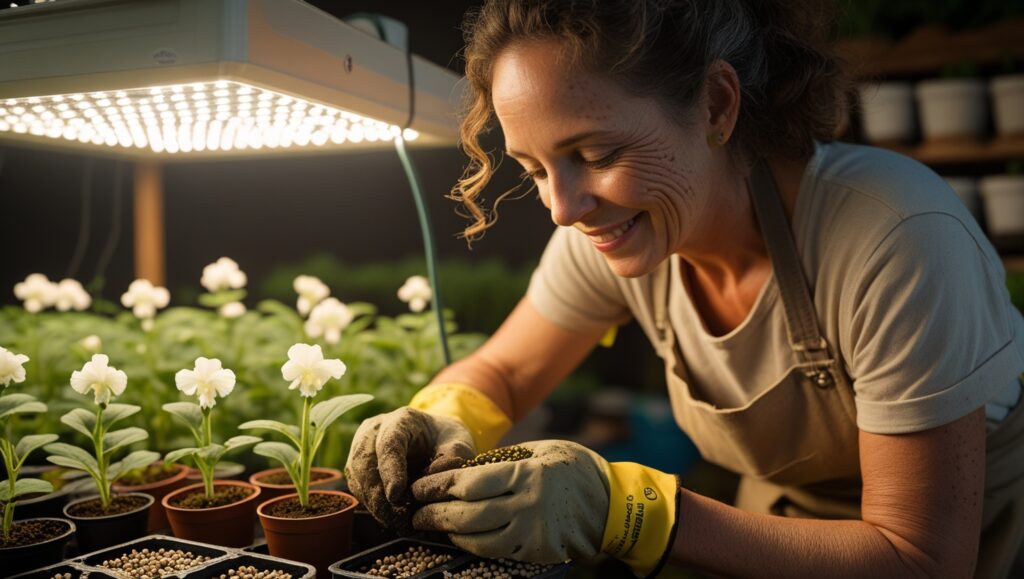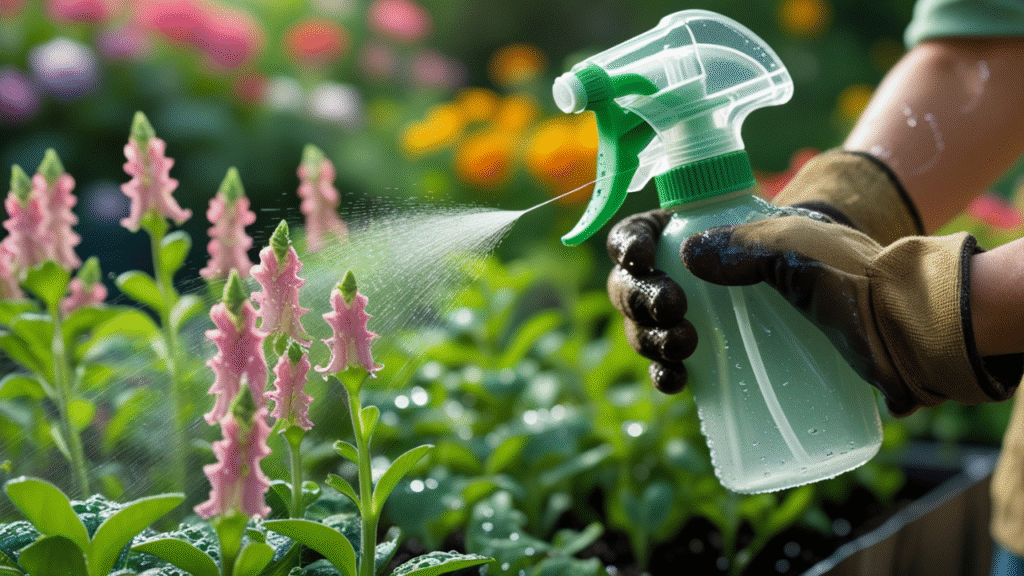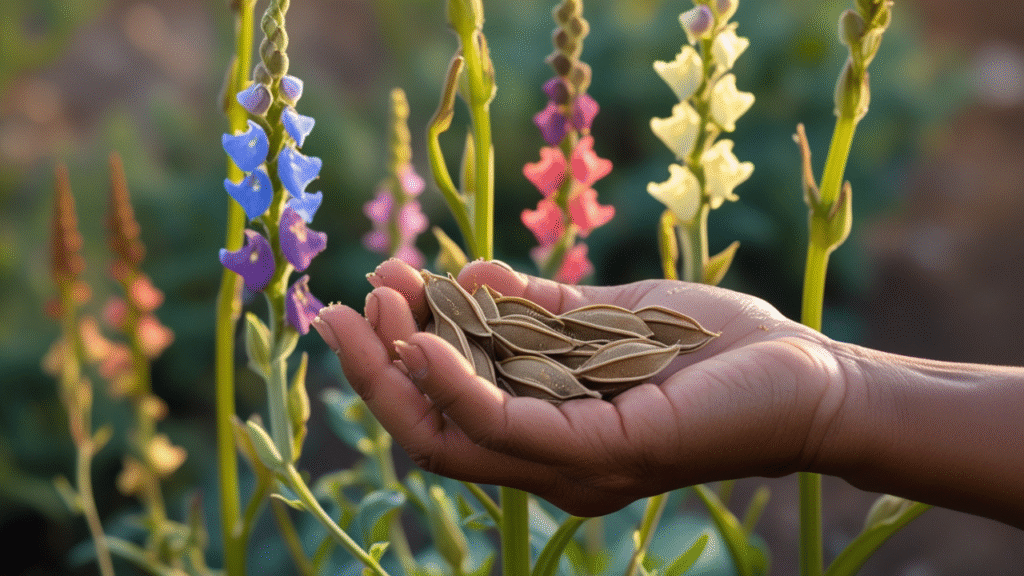
Every time I run my fingers over a packet of snapdragon seeds, I’m reminded of my very first flower garden. It wasn’t perfect—my rows were crooked, my watering schedule inconsistent—but the moment those tiny green shoots broke through the soil, I was hooked. I remember whispering words of encouragement to those seedlings like they were old friends. And when the first blooms opened—tall, ruffled, and humming with bees—it felt like magic.
If you’re holding a packet of snapdragon seeds and feeling a mix of excitement and nervousness, you’re not alone. I’ve been there. Growing snapdragons from seed isn’t just about pretty flowers—it’s about learning patience, nurturing life, and celebrating every small victory. This guide is here to walk you through the process step by step. Whether you’re planting in pots or prepping garden beds, I’ll share everything I’ve learned to help your snapdragons thrive.
Why Grow Snapdragons from Seeds?
Cost-Effective Beauty for Your Garden
Buying mature snapdragon plants from a nursery is convenient—but growing them from seed is where the magic (and savings) really happen. A single packet of snapdragon seeds can yield dozens of healthy plants for the price of just a few transplants. And trust me, when those blooms stretch toward the sun, you’ll feel proud knowing you raised them from the very start.
Greater Variety and Control
When you grow snapdragons from seed, the variety is nearly endless. From petite “Twinny” types perfect for pots to towering “Rocket” blooms that steal the show in bouquets, you get to choose exactly what suits your space and style.
Want bold, fiery reds? You’ve got it.
Prefer soft pastels for a cottage garden look? Done.
Need a compact type for your balcony? There’s a seed for that.
You also control how your plants are raised—no mystery chemicals or stressed roots from overcrowded trays.
A Rewarding Gardening Experience
Nothing compares to the satisfaction of watching snapdragon seeds turn into thriving, blooming plants. You’ll learn the rhythm of the seasons, how light and water work together, and you’ll build a deeper connection with your garden. Growing from seed isn’t just a task—it’s a journey, and it changes how you see every petal.
Best Snapdragon Varieties to Grow from Seed
Dwarf, Intermediate, and Tall Types

Snapdragons come in all shapes and sizes, and choosing the right one can make or break your garden design. Here’s a quick breakdown:
| Type | Height Range | Best Use |
|---|---|---|
| Dwarf | 6–12 inches | Containers, edging |
| Intermediate | 12–24 inches | Borders, mixed beds |
| Tall | 24–36 inches or taller | Cutting gardens, back rows |
Personally, I adore the tall “Madame Butterfly” series in my cut flower beds—they add height, drama, and are long-lasting in vases.
Most Popular Colors and Shapes
Snapdragons are famous for their jaw-dropping color range. Here are some of my favorites to grow from seed:
- “Chantilly Mix” – Open-faced blooms in soft sherbet shades
- “Rocket Series” – Classic tall spikes in vibrant colors
- “Twinny Appleblossom” – Ruffled double blooms in pastel pink and cream
- “Night and Day” – Dramatic contrast of deep burgundy and white
Each variety brings its own character—planting a mix adds texture and color harmony to your garden.
Varieties for Containers vs. Garden Beds
Best for Containers:
- Twinny Mix
- Montego Series
- Floral Showers Mix
Best for Garden Beds:
- Rocket Series
- Madame Butterfly
- Chantilly
Tip: Choose dwarf varieties for windy balconies or patios where taller types might topple.
When and Where to Plant Snapdragon Seeds

Ideal Planting Season by USDA Zones
Snapdragons are cool-weather lovers. Here’s when to start your seeds:
- USDA Zones 7–10: Start seeds indoors in late winter (January–February). Transplant outside in early spring.
- Zones 3–6: Start indoors 10–12 weeks before your last frost. Transplant after danger of hard frost passes.
In my Zone 6 garden, I sow seeds indoors around mid-February, and by mid-April, I’m gently hardening them off outdoors.
Best Spots: Sunlight, Temperature & Soil Conditions
Snapdragons thrive in:
- Full Sun: At least 6–8 hours of light daily
- Cool Temperatures: 55°F–70°F is their sweet spot
- Well-Draining Soil: Loose, loamy, and enriched with compost
Avoid planting them in hot, dry areas where afternoon sun scorches delicate seedlings.
Indoor vs. Outdoor Sowing — Pros & Cons
Indoor Sowing (My Preferred Method):
- More control over light, temperature, and watering
- Earlier blooms
- Less seed loss due to pests or weather
Outdoor Sowing:
- Easier, no need for seed trays
- Best in mild climates or fall sowing areas
- Risk of uneven germination
Pro Tip: If you’re new to seed starting, begin indoors where you can lovingly check on them each morning. It becomes a happy ritual.
Caring for Young Snapdragon Plants
Watering Tips for Healthy Seedlings

Snapdragon seedlings are delicate, and overwatering is a common mistake. The key is to keep the soil consistently moist but never soggy.
What works best:
- Use a spray bottle or bottom-watering tray to avoid disturbing fragile roots
- Water early in the day so leaves can dry before nightfall
- Check moisture by gently pressing the soil—if it sticks to your finger, wait a day
Snapdragon seeds love gentle, even care, especially in their early stages.
Fertilizing Schedule for Strong Growth
Once your seedlings have their first set of true leaves, it’s time to feed them.
My go-to fertilizing routine:
- Use a diluted, balanced fertilizer (10-10-10 or 20-20-20) every 10–14 days
- Start at ¼ strength to avoid burning tender roots
- Once plants are transplanted outdoors, switch to a bloom-boosting formula (like 5-10-10)
A gentle feeding routine gives snapdragon seeds the strength to grow into strong, bloom-filled plants.
Pinching for Bushier Plants
This trick changed everything for me.
When your snapdragon plants are about 4–6 inches tall, snip off the growing tip right above a leaf node. It encourages:
- Multiple stems
- Bushier growth
- More blooms
It’s like a little haircut with big results. Your future self (and your flower vases) will thank you.
Common Issues When Growing Snapdragons from Seed
Damping Off Disease & How to Prevent It
This heartbreaking disease can wipe out seedlings overnight. I lost an entire tray my first year. Here’s how to protect your snapdragon seeds:
- Use sterilized seed trays and fresh potting mix
- Avoid overwatering
- Provide airflow with a small fan on low
If you spot mushy stems or sudden collapse, act fast—remove affected plants and treat with a natural fungicide.
Poor Germination Causes
If your snapdragon seeds aren’t sprouting, don’t panic. Possible reasons:
- Light: Snapdragon seeds need light to germinate—don’t bury them!
- Temperature: Keep them between 65–70°F
- Old Seeds: Always check expiration dates; fresh seeds germinate best
I once used a packet I found in the back of a drawer—zero germination. Lesson learned.
Pest Problems in Early Growth Stages
Young snapdragons can attract:
- Fungus gnats (due to soggy soil)
- Aphids on tender leaves
- Slugs/snails if transplanted too early
What I do:
- Sprinkle diatomaceous earth around trays
- Use a gentle neem oil spray
- Keep indoor seedlings away from open doors and windows
Harvesting Seeds from Mature Snapdragons

When and How to Collect Seeds
Saving your own snapdragon seeds is a beautiful way to keep the garden going year after year.
Wait until:
- Seed pods turn brown and dry on the plant
- Pods start to split open
Then:
- Gently cut the stem below the pod
- Hold over a paper plate and shake the seeds out
- Remove any chaff or plant debris
The first time I did this, I was amazed at how many tiny seeds came from one plant—it felt like gardening gold.
Storing Snapdragon Seeds for Next Season
- Place clean, dry seeds in paper envelopes
- Label with variety and date
- Store in a cool, dark place (like a closet or basement)
If kept dry, snapdragon seeds can last 3–5 years with good germination rates.
Where to Buy Quality Snapdragon Seeds Online
What to Look for in a Trustworthy Seller
With so many seed suppliers online, it can be hard to know who to trust. Look for:
- High germination guarantee
- Clear variety descriptions
- Customer reviews with real garden photos
- Organic or heirloom options
Reputable sellers take pride in their seeds—and your snapdragon seeds deserve the best start.
Top-Rated Seed Suppliers in 2025
Here are a few I’ve had success with (U.S.-based):
- Johnny’s Selected Seeds – Great for specialty snapdragon varieties
- Baker Creek Heirloom Seeds – Stunning colors and heirlooms
- Floret Flowers – Beautiful, florist-quality snapdragon selections
- Eden Brothers – Affordable bulk options for bigger gardens
Always order early—popular varieties sell out fast in spring.
Final Thoughts: Why Snapdragon Seeds Deserve a Spot in Your Garden
Growing snapdragon seeds has brought me so much joy over the years. From the thrill of seeing those first sprouts to the delight of watching bees dance around tall blooms, it’s a journey filled with beauty, learning, and a whole lot of heart.
If you’re a beginner, let this be your gentle nudge: You absolutely can do this.
Start with one tray. Nurture it. Learn as you go. And soon, you’ll be walking among vibrant, joyful blooms you grew yourself—from seed to flower.
I’ll be cheering you on every step of the way.
With love and muddy hands,
Flora Lane
FAQs About Growing Snapdragon Seeds
Q1: How long do snapdragon seeds take to germinate?
Snapdragon seeds typically germinate in 7–14 days when kept between 65–70°F with consistent moisture and light.
Q2: Can I direct sow snapdragon seeds outdoors?
Yes, but it’s best for mild climates. Seeds prefer cool temps to germinate, so in most U.S. zones, indoor sowing is more reliable for early blooms.
Q3: Why are my snapdragon seedlings falling over?
This could be damping off disease or lack of light. Make sure your seedlings get bright light and you’re not overwatering. Improve airflow with a small fan

